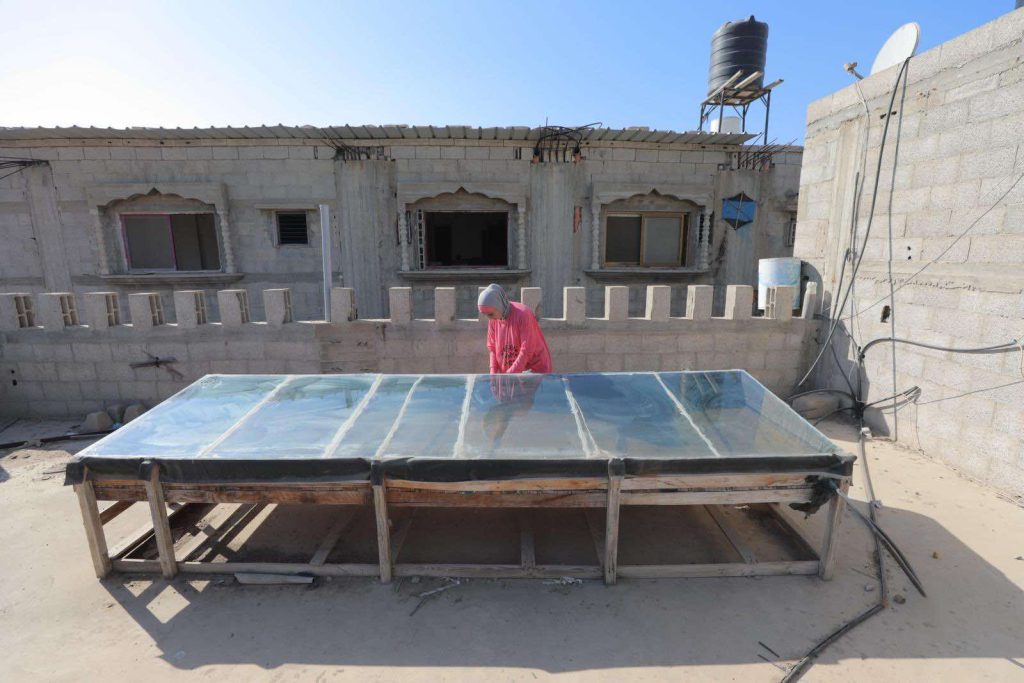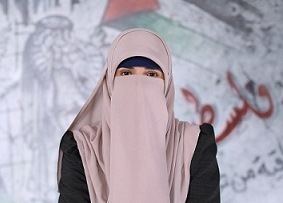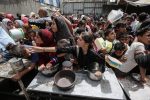Inas Al-Ghoul, an agricultural engineer in Gaza, has managed to manufacture a desalination device to produce potable water amid the acute shortage of drinking water across the battered Gaza Strip. Since last October, the Israeli occupation army has deliberately cut off water supplies, destroying most of the wells, reservoirs, and desalination plants, leading to widespread scarcity of clean water throughout the Gaza Strip.
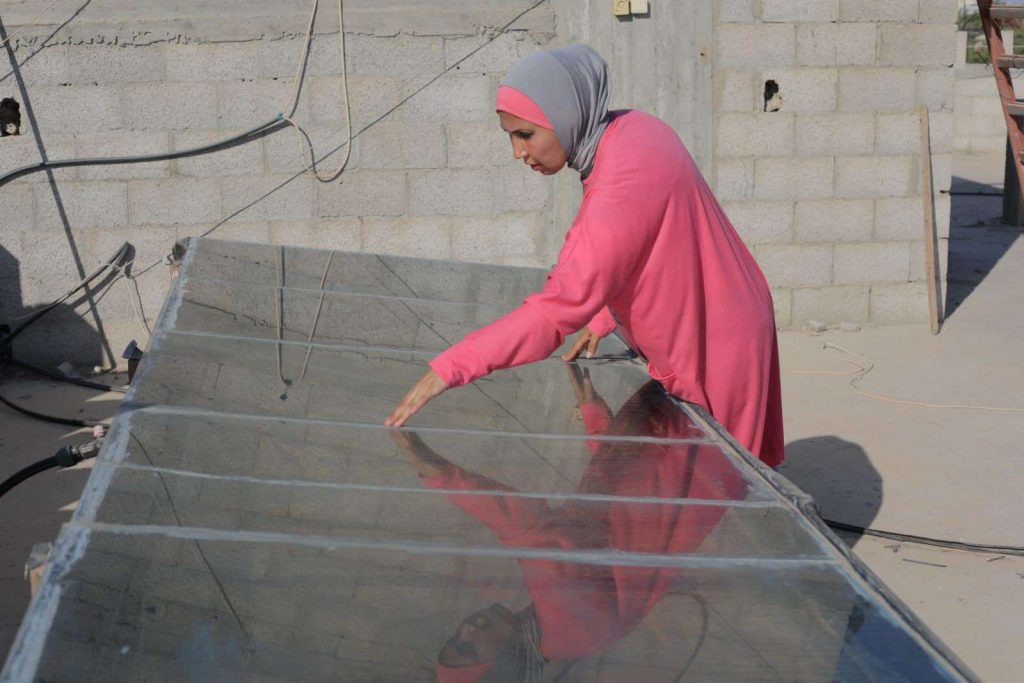
“From my displacement zone, I saw how hard it is for the people to find clean drinking water,” says Alghoul, who was displaced from Khan Yunis City in the northern Gaza Strip. The lack of water and soaring prices for what little is available motivated her project.
According to Al-Ghoul, the availability of fresh water in the Gaza Strip is extremely expensive compared to what it used to be. It has become a daily routine for families to queue for hours to fill bottles and jerry cans with drinking water. “Every morning under the burning sun, my grandsons walk long distances carrying the heavy weight to fetch us water,” the displaced elderly Sa’ed Owdeh said to PIC. “We were forced to drink salty and contaminated water to survive for some time during the current genocide.” He continued, “Yes, we have very little access to drinking water, and it’s so expensive, but our situation much better than the north of Gaza, where they are still drinking contaminated water.”
According to UNRWA, about 67 percent of water and sanitation facilities and infrastructure have been destroyed or damaged by the Israeli strikes. Nearly 2 million out of 2.4 million Palestinians are displaced now due to the relentless Israeli bombardment and forced displacement from several areas.
Al-Ghoul uses a solar distiller to convert the salty seawater or polluted water into drinkable water. She uses a wooden box enclosed with glass and leather that is perforated with holes for water to enter and exit. Water is heated using solar energy, which evaporates to steam and then condenses to return to a liquid state, then passed through a layer of activated charcoal to purify. Al-Ghoul uses simple tools and materials from what is available, like wood, leather, and glass. The broken glass from destroyed homes works, according to her. She explained that the device is easy-to-use and light so that it can be transported anywhere within the displacement zones.
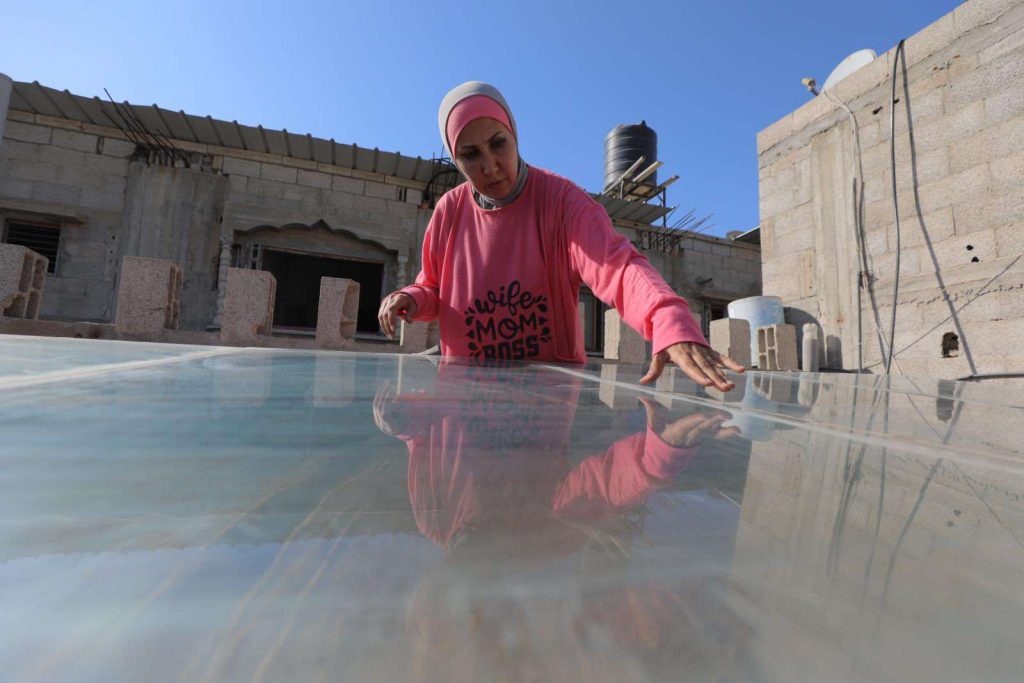
The tiny enclave is experiencing a real war of thirst as a result of the inability to run desalination plants, with many municipal wells out of service due to power outages and lack of fuel, and large numbers of people displaced from Gaza City and the northern sector towards the south, crowded into sheltering schools and makeshift tents zones.
Lama Abdel Samad, a specialist in the field of water and sanitation at Oxfam, says, “We have seen in action Israel’s use of collective punishment and starvation as a weapon of war. We are now witnessing its use of water as a weapon, which is already having deadly consequences. But deliberately restricting access to water is not a new policy. The Israeli government has deprived Palestinians throughout the West Bank. The Gaza Strip has had unsafe and insufficient water for many years.”
Only 4% of Gaza population had access to safe and clean water in times before the Israeli occupation onslaught last October. Currently, under the continuous aggression on the Gaza Strip, and the lack of fuel needed to operate water desalination plants and water well pumps, people are suffering to get any water at all, not only safe water, according to a joint press release by The Palestinian Central Bureau of Statistics (PCBS) and the Palestinian Water Authority (PWA). The press release further stated that only one water desalination plant in the South of Gaza is currently working at an operating capacity reaching 5%, while the other two plants are not working at all due to power outages and lack of fuel.
“Under such horrible conditions afflicting my people and their basic needs, I couldn’t stand idle,” the engineer says. She explained that recently, algae began to appear in the freshwater her family purchased, indicating that the water is polluted. This prompted her to think of a solution to the ongoing crisis. Her purification devices have been set up in several sheltering schools, and she hopes to manufacture more to use throughout Gaza, particularly for the north of the coastal enclave, where supplies and equipment are in severe shortages. She also hopes to set up a garden on the roof of her house, which would also require clean fresh water. Al-Ghoul says that the project is based on an old idea from about 40 years ago, and she began to work on it due to the urgent need for both readily available fresh water nearby and the critical need for a solution to water desalinization across the Gaza Strip. According to Al-Ghoul, the people of Gaza never give up, constantly searching for new innovations and initiatives to survive within the unfolding carnage.
-Wafa Aludaini is a Gaza-based journalist. She contributed this article to the Palestinian Information Center.
